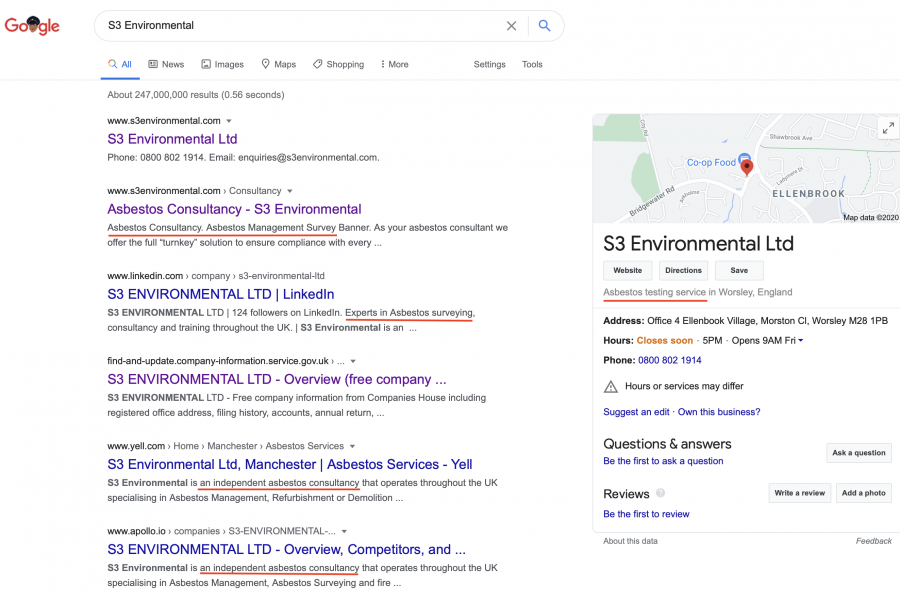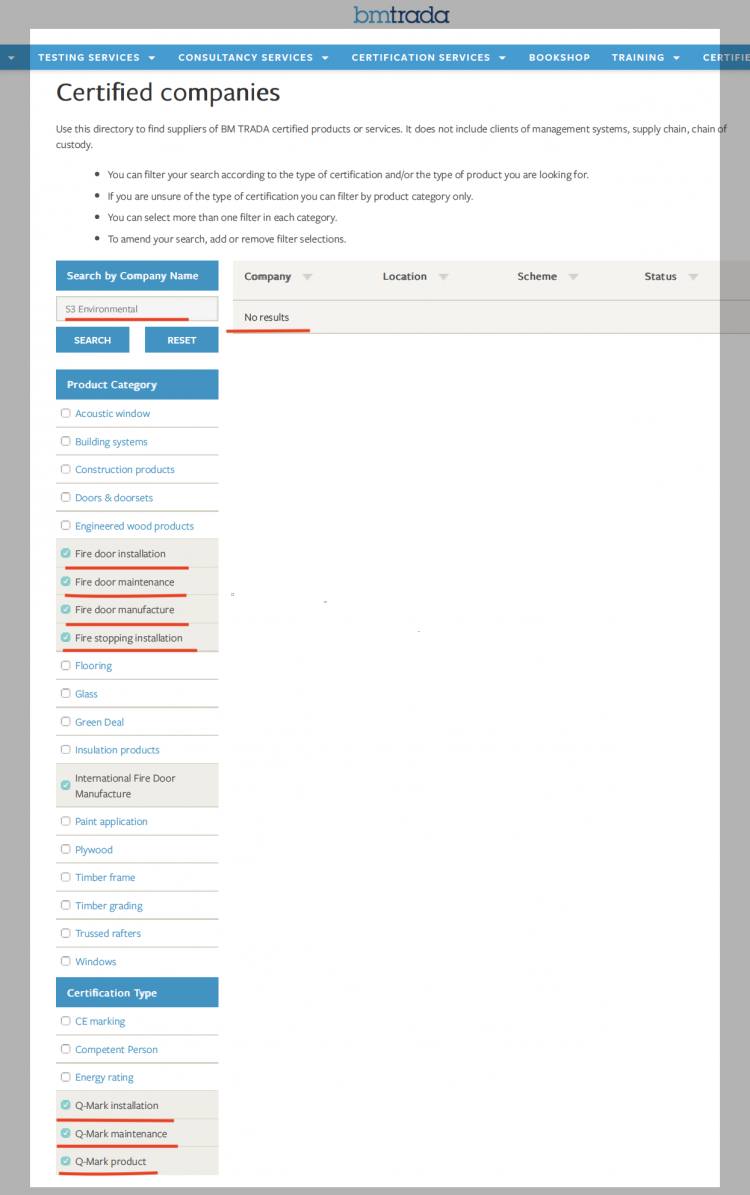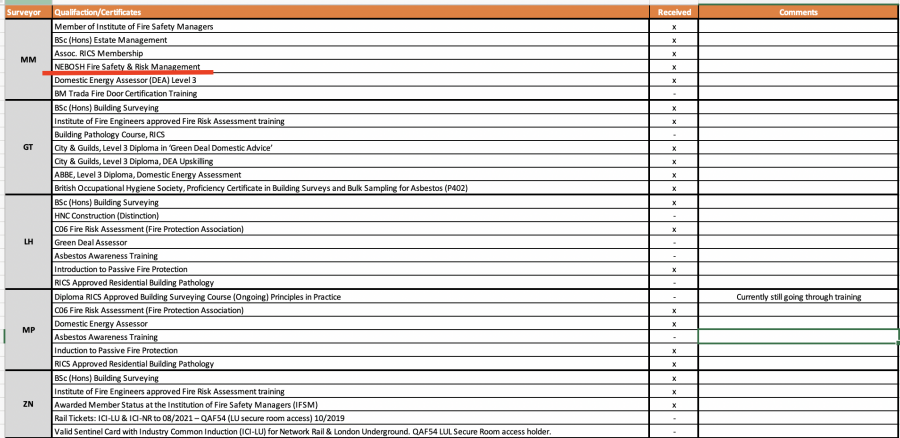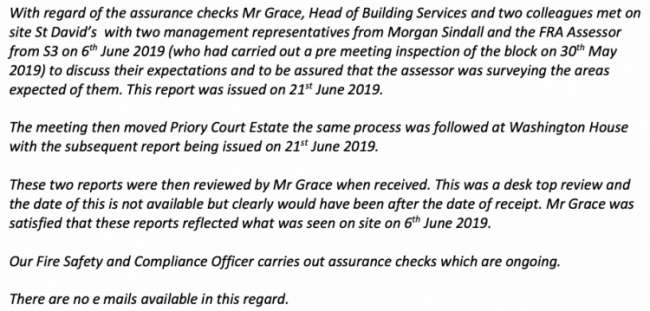LBWF and its fire safety contractor S3 Environmental Ltd.: council officers maintain everything’s OK, but questions and concerns persist
Previous posts have expressed unease about the fact that in 2019, and via its housing repairs and maintenance agent Morgan Sindall Group PLC, LBWF appointed S3 Environmental Ltd. to conduct Fire Risk Assessments (FRAs) for its housing blocks (see links below).
In response, LBWF has remained steadfast in its view that S3 Environmental Ltd. is an experienced and qualified provider of fire safety services, and thus – it is implied – an appropriate replacement for its predecessor, the blue ribboned Ridge and Partners LLP.
Nevertheless, such insistence notwithstanding, questions and concerns persist.
To begin with, it is worth re-emphasising that on the internet, S3 Environmental Ltd. describes itself – and is invariably described by others – solely as an asbestos consultancy. For example, the first page of Google search results starts with these entries:
As to S3 Environmental Ltd. and fire safety, the company presently states on LinkedIn that it is about to launch a new website with the strap line ‘Supporting you with Asbestos & Fire Consultancy’, but there are few, if any, other such references, now or in the past. If S3 Environmental has experience in fire safety, it has left no trace.
Relatedly, S3 Environmental Ltd. also is apparently unknown in the fire safety industry. Revealingly, though the BAFE (British Approvals for Fire Equipment) and the Fire Industry Association registers taken together list 2,600 companies working in the sector, S3 Environmental Ltd. is not one of them.
Similarly, though S3 Environmental Ltd. until recently claimed to have a ‘Q-Mark Fire Certification’ awarded by well established testing and certification agency, BM Trada, this appears to have lapsed:
Responding to questioning about such matters, LBWF officers underline that, in order to be absolutely sure that fire safety work in the borough is compliant with the legislation, they have carried out ‘additional assurance checks’ on both S3 Environmental Ltd. staff, and on the latter’s completed FRAs.
However, some of the material forwarded as substantiation is not entirely convincing.
One example is a table which lists the S3 Environmental Ltd. fire risk assessors’ qualifications, here:
At first sight, this appears impressive, but closer scrutiny reveals some caveats.
In nine of the 31 cases, no proof of qualification so far has been offered.
Moreover, only six of the 22 qualifications listed deal specifically with fire safety.
Finally, it is by no means obvious that those fire safety qualifications which are listed anyway address the particular circumstances of local authority housing, especially high-density, relatively high-risk locations such as tower blocks and sheltered accommodation.
Thus, NEBOSH describes its Fire Safety and Risk Management qualification (see the entry for ‘MM’ underlined in red at the top of the table) as ‘particularly relevant for those who contribute to or review fire risk assessments within low to medium risk workplaces’ [emphasis added].
No doubt, some of the skills taught in NEBOSH fire safety courses will be transferable.
But it is also worth noting that when in 2017, the National Fire Chiefs Council (NFCC) published advice on ‘appointing an external specialist to carry out a fire risk assessment’, it was adamant that due recognition should be given to the fact that ‘specialised housing [for example, sheltered accommodation] is very different in nature from commercial premises, such as offices, shops and factories, and general needs housing’, so underlining that transferability has its limits.
As to LBWF’s supervision of S3 Environmental Ltd.’s FRAs, it recently forwarded the following statement:
Again, this initially looks authoritative. But if Mr. Grace carried out a ‘desk top review’, how come this can’t be dated? And why is it that ‘there are no e mails [sic] available in this regard’?
After all, making sure that a new contractor performs satisfactorily in relation to such a sensitive matter as fire safety is no trivial responsibility, and, if only to protect himself from subsequent criticism, Mr. Grace no doubt would have recorded his conclusions, and circulated them to interested parties. That LBWF can’t or won’t produce this material will certainly strike many as distinctly odd.
The final point is perhaps the most important.
Turning again to the NFCC’s advice on appointing fire risk assessors, one of its other key recommendations was that though individuals of course should be appropriately both qualified and certified, companies should be too. It elaborated as follows:
‘Guidance on selecting a competent fire risk assessor has been produced by the Fire Risk Assessment Competency Council (FRACC), which comprises a large group of stakeholders within the fire safety profession. Where external specialists are engaged to carry out fire risk assessments, the FRACC recommends the use of companies (including sole traders) that are third party certificated in relation to fire risk assessments by a third party certification body that is, itself, accredited by the United Kingdom Accreditation Service (UKAS) to operate the certification scheme in question. One benefit of using a third party certificated company is that it is not only expected that, individually, the fire risk assessors of the company are competent, but that the company has an adequate system for management of quality’.
However, asked specifically about how S3 Environmental Ltd. fits with this advice, LBWF first points out, somewhat defensively, that NFCC has no statutory powers, but then admits ‘We are not aware that S3E is 3rd party certified’.
As is obvious, ignoring expert opinion – and the NFCC is as expert as you can get – hardly reassures.
In conclusion, none of the preceding observations should be taken to suggest that S3 Environmental Ltd. has behaved unprofessionally. The company has a good name in the asbestos consultancy industry, and is obviously entitled to bid for any contract that appears propitious.
It is for the Town Hall to uphold procurement rules, complete appropriate due diligence, and ensure that specifications are in line with the expert consensus; and in the case examined here that is where the root of the problem lies.
Put bluntly, LBWF’s appointment of S3 Environmental Ltd. in 2019 was always likely to raise eyebrows, since at that time the latter was small, impecunious, and, as far as could be ascertained from industry sources, without much relevant experience.
Subsequently, LBWF officers have tried to justify themselves, yet as this post reveals, failed to convince.
What makes the situation less acceptable still is that by using Morgan Sindall Group PLC to look after the practical side of the contract with S3 Environmental Ltd., LBWF has been able to protect itself from the full force of the Freedom of Information Act.
Thus, for example, when LBWF was asked under the Act for ‘copies of all relevant correspondence, reports etc., both internal and in relation to Morgan Sindall, concerning the appointment of S3 Environmental to carry out fire safety work on behalf of LBWF’, plus ‘the date when S3 Environmental’s contract started, and the sum that the company is being paid either p.a. or per job (as is appropriate)’, it responded ‘due to the fact that S3Environmental [sic] are a subcontractor to Morgan Sindall we do not hold the information that you have requested’.
In circumstances such as these, it is little wonder that residents continue to be nervous.




